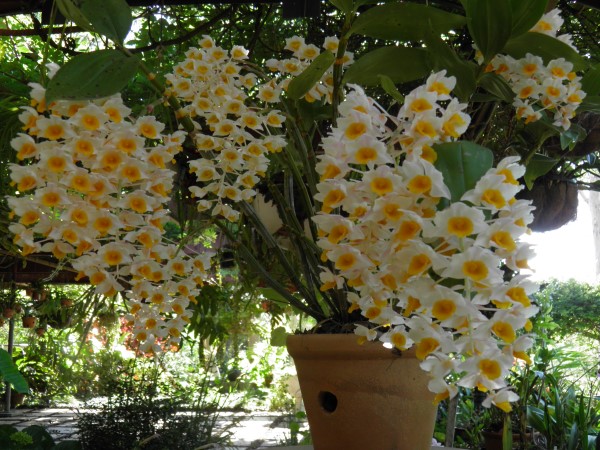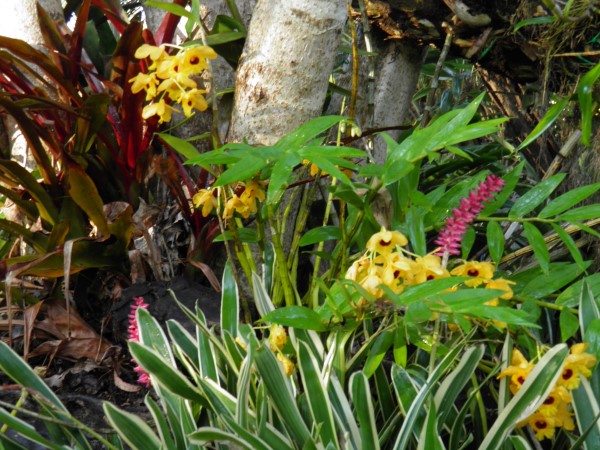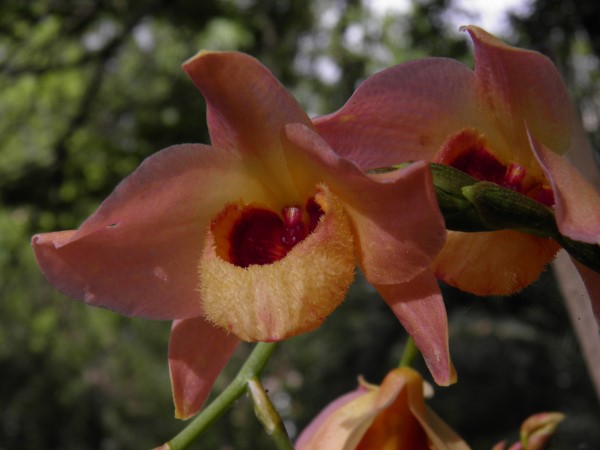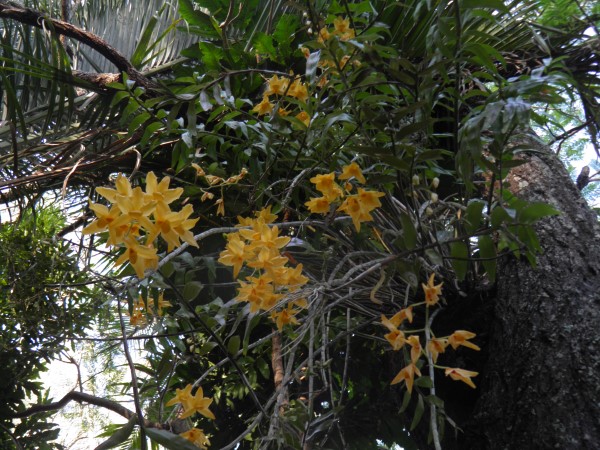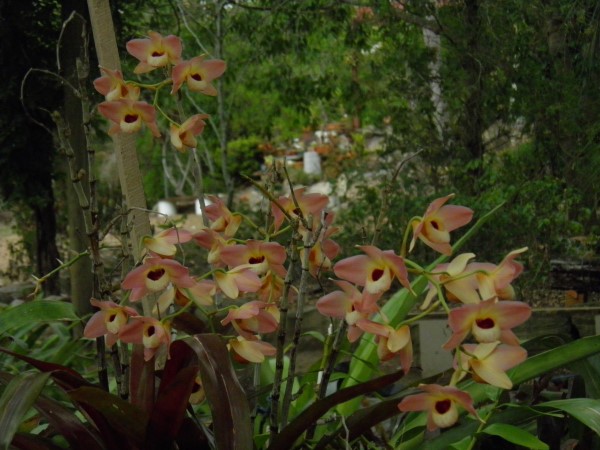


Return to Orchid Growing
Hardcane Dendrobium GROWING HINTS

HARDCANE DENDROBIUMS
Dendrobiums are the most diverse of the orchid genera and have the most numerous orchid species.
Hardcane Dendrobiums are called such to differentiate them from the Softcane Dendrobiums.
Their canes are generally thinner than the Softcanes and harder (not as fleshy) and often ribbed. Most of the Hardcane Dendrobiums flower at the top of the stems. There are a few different types of Hardcane dendrobiums which are grouped into different sections as they have different growing requirements.
The Callista group is easy to grow outside here in Brisbane. They can be 'square' stemmed hardcanes and they come from the Indo-Asia region.
These include thysiflorum, densiflorum, chrysotoxum and farmeri. Like most of the hardcanes, these stunning orchids keep their leaves and flower at the end of their stems. The flowers of thysiflorum, farmeri and densiflorum form a cone at the tip of the stem and then proceed to unfold their flowers like bunches of grapes around December. I grow these in terracotta pots on a wall in the wisteria courtyard.
Chrysotoxum is happy on a fern tree stem in the Bromeliad garden with more light and produces its bright yellow flowers in spring. This group do like a distinct dry period over winter and like bright indirect light.
The last group of Hardcanes are the fully leafed ones which have very long stems and include discolour, pulchellum, moschatum and fimbriatum. These Dendrobiums need plenty of room as some of their canes can be up to five metres long.
They can be grown in hanging baskets or in a fork of a tree in bright light. I grow mine in the fork of an umbrella tree in the Bromeliad garden and in the rainforest area in the fork of an ironbark tree. Fimbriatum has slightly smaller canes being about a meter long.
All of these Hardcane Dendrobiums are epiphytes, so if grown in a pot, it must be small, and orchid bark used as a medium. As they are big orchids they will need to go into a hanging basket eventually. They are tropical, but some are happy in sub-tropical conditions as they come from a cooler region. Like all tropical orchids, in nature they experience humid summers and dry winters. They dislike being cold and wet so it is important to drastically reduce watering in winter.
They can form keikies on the stems after flowering and these keikies can be removed once there are two stems and some aerial roots. They can also re flower on the old stems, so it is best to leave the old stems on the plant until completely dead.
Hardcane Dendrobiums are called such to differentiate them from the Softcane Dendrobiums.
Their canes are generally thinner than the Softcanes and harder (not as fleshy) and often ribbed. Most of the Hardcane Dendrobiums flower at the top of the stems. There are a few different types of Hardcane dendrobiums which are grouped into different sections as they have different growing requirements.
The Callista group is easy to grow outside here in Brisbane. They can be 'square' stemmed hardcanes and they come from the Indo-Asia region.
These include thysiflorum, densiflorum, chrysotoxum and farmeri. Like most of the hardcanes, these stunning orchids keep their leaves and flower at the end of their stems. The flowers of thysiflorum, farmeri and densiflorum form a cone at the tip of the stem and then proceed to unfold their flowers like bunches of grapes around December. I grow these in terracotta pots on a wall in the wisteria courtyard.
Chrysotoxum is happy on a fern tree stem in the Bromeliad garden with more light and produces its bright yellow flowers in spring. This group do like a distinct dry period over winter and like bright indirect light.
The last group of Hardcanes are the fully leafed ones which have very long stems and include discolour, pulchellum, moschatum and fimbriatum. These Dendrobiums need plenty of room as some of their canes can be up to five metres long.
They can be grown in hanging baskets or in a fork of a tree in bright light. I grow mine in the fork of an umbrella tree in the Bromeliad garden and in the rainforest area in the fork of an ironbark tree. Fimbriatum has slightly smaller canes being about a meter long.
All of these Hardcane Dendrobiums are epiphytes, so if grown in a pot, it must be small, and orchid bark used as a medium. As they are big orchids they will need to go into a hanging basket eventually. They are tropical, but some are happy in sub-tropical conditions as they come from a cooler region. Like all tropical orchids, in nature they experience humid summers and dry winters. They dislike being cold and wet so it is important to drastically reduce watering in winter.
They can form keikies on the stems after flowering and these keikies can be removed once there are two stems and some aerial roots. They can also re flower on the old stems, so it is best to leave the old stems on the plant until completely dead.
Let nature be your guide
